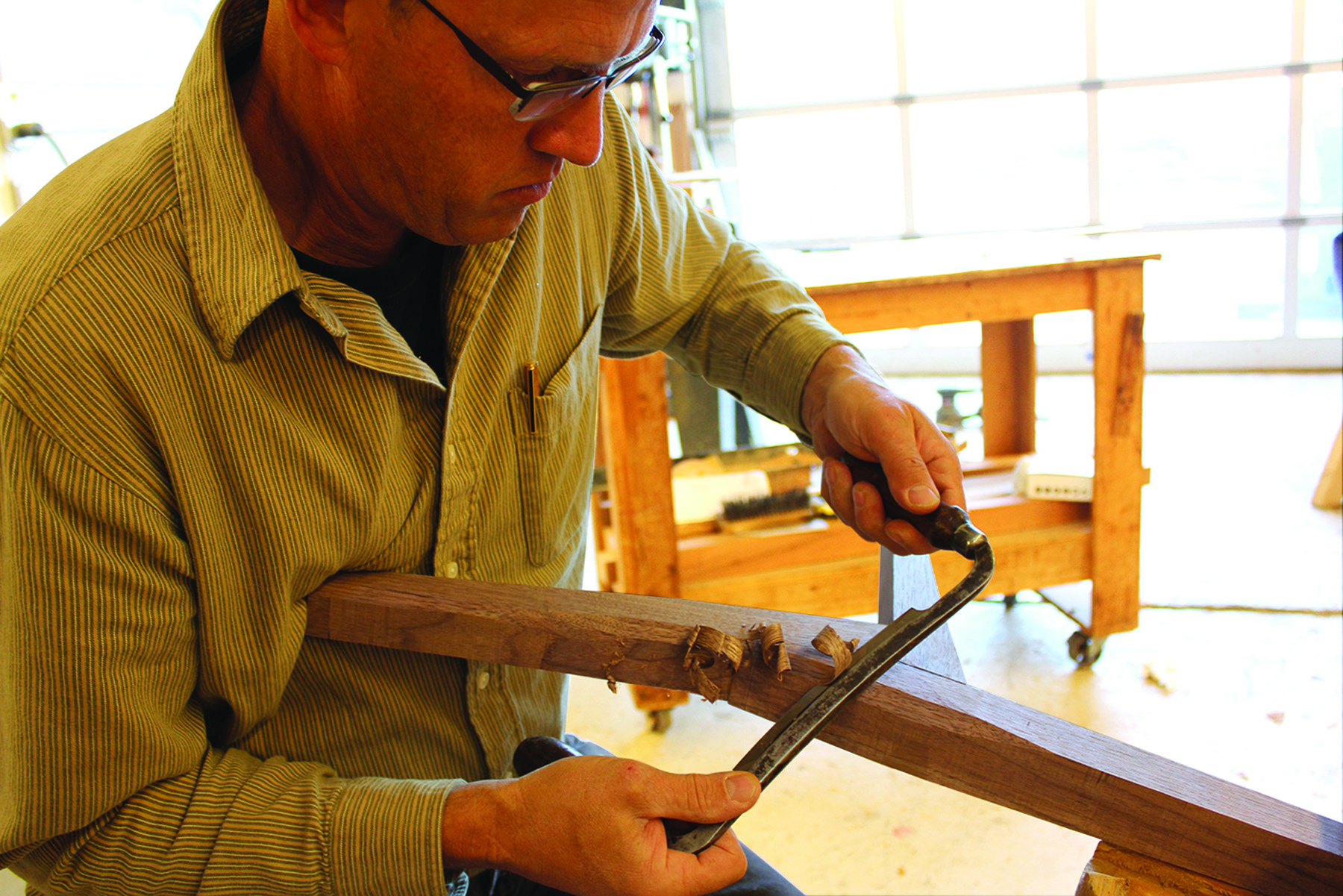We may receive a commission when you use our affiliate links. However, this does not impact our recommendations.

The best source for learning is right there on your bench.
At a seminar I found myself saying that I mostly taught myself woodworking. It was an easy way to get the idea across that I did not go to woodworking school or take seminars. Later, I regretted not responding more thoughtfully. What a pity I didn’t tell the truth. How can I be “self taught” when I have had so many teachers that I can’t count them all, and I’m not sure I even knew when I was given a lesson.
Learning happens all the time and comes from sources we don’t always recognize. In 1985, I spent time with Dave Sawyer in Vermont. I had heard rave reviews about his mastery with ladderback chairs. Hearing that he had moved on to Windsors did not sway my interest, so I signed on. It was a wonderful time of intensive learning. After hearing me talk about my work and techniques, Dave said, “I can certainly teach you something about efficiency.”
Every day I waited for the efficiency lesson but he never talked about it. As I started back to work, I set aside the Windsor dreams and got back to my designs. I found that something had shifted. Chairs took about half the time they took me before. I was mystified. How could I be faster at ladderbacks having been away for three weeks! What did he teach me?
Years later it remains a mystery. I was not consciously doing anything different, but something had changed.
Years later I had a different learning experience. I was frustrated with my spokeshaves, planes and drawknives. I believed I should be getting better finishes off the tool. I wanted the kind of finishes James Krenov writes about in his books. I had never seen such plane work, but he made me a believer and I wanted that experience.
I took a week off my production work to explore what was going on with my tools. For years I referred to that as “teaching myself,” but I was not the teacher – I was the student. Now I see that the wood and the tools were my teachers, and if I paid attention to them the lessons would take hold.
I’ve met skilled woodworkers who inspired me to think about why we do things certain ways. Students have also opened my eyes in areas where I had become complacent. I’ve made breakthroughs that I can’t explain. I have also “figured things out” in solitude. I was being taught, but I wasn’t teaching myself.
This isn’t a matter of perspective or semantics. In looking at experience as teaching yourself, you focus on mental activity that gets in the way of paying attention to what is happening on the bench. If you think of the wood you work with or the tool you’re using as a teacher, you take in the lesson and tap the source of knowledge from which all your human teachers draw.
I now start my classes by telling students not to believe anything I tell them. I do this because I have seen students take what an instructor says as gospel, then not explore the questions that arise around why a technique works, or why wood behaves a certain way. I prefer now to direct students to the sources from which I learn.
When others tell me how to do something I try it – and I learn. I don’t know it because they told me; I know it because I experienced it. Then I try variations, letting the material and the tool teach me what they will.
This is what I want you to learn: Not to just listen and believe, but to use what is said in conjunction with the source available – pick up that piece of wood and pay attention.
I write this to honor those who have helped me, but also to point to the richest source of understanding about woodworking any of us has. It’s right there on your bench.
Here are some supplies and tools we find essential in our everyday work around the shop. We may receive a commission from sales referred by our links; however, we have carefully selected these products for their usefulness and quality.








